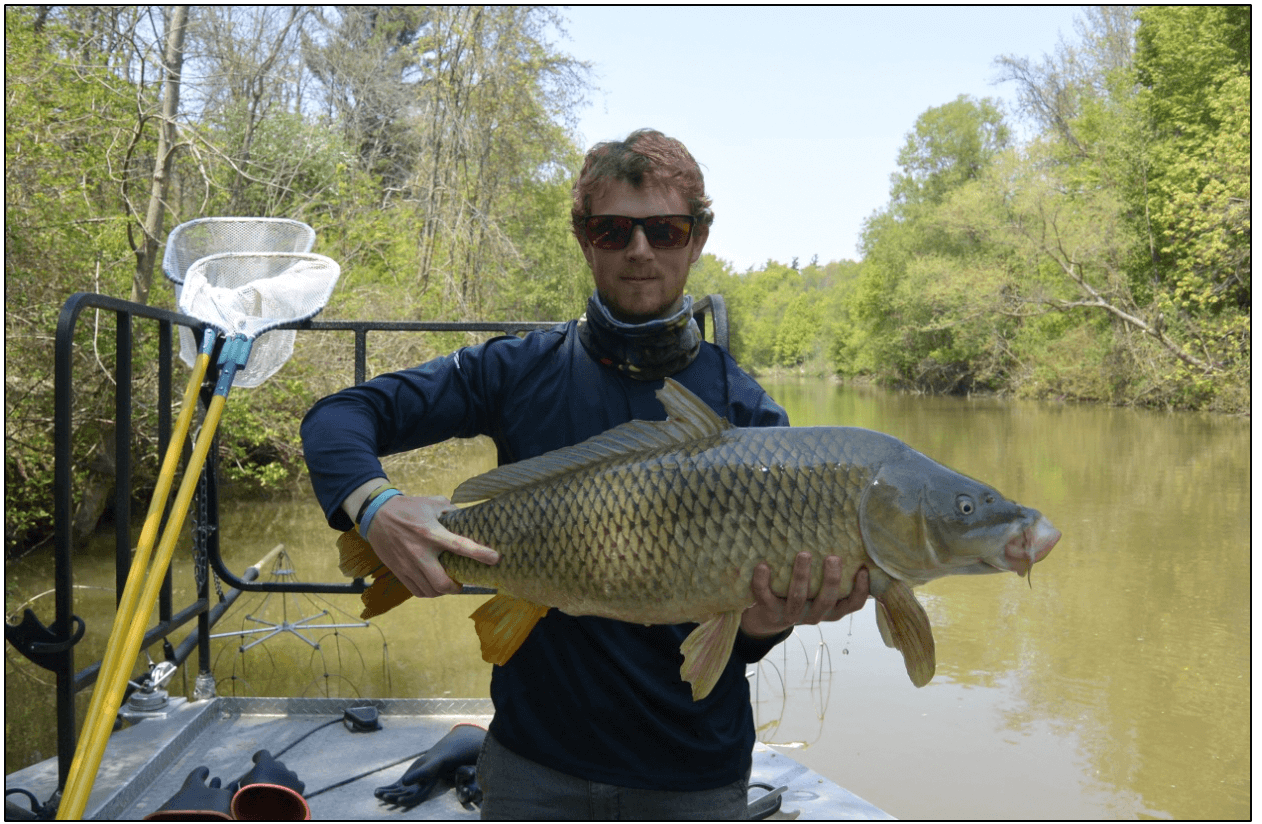
My 2018 summer was spent in the field with Fisheries and Oceans Canada’s Asian Carp Program. Since its inaugural field season in 2013, this program has continued to monitor major tributaries of the Great Lakes’ Huron-Erie-Ontario corridor as part of its annual early detection of Asian carp efforts. At each water system, electrofishing and various nets are used to capture both juvenile and adult fish. Beyond surveying for Asian carps (and other invasive fishes) this sampling builds critical baseline data on the basin’s native fish populations.
In 2017, the Program added nearshore coarse woody debris presence to their habitat data collection protocol. As a known feeding zone and refuge for fish, the idea that Ontario’s Asian carp surrogate species may be captured more frequently around this habitat feature deserved further inquiry. This research question became the focus of my master’s project. The purpose of this study is to better understand what specific habitat features Asian carps may gravitate to in the Great Lakes and, in turn, help increase the precision of standardized and targeted sampling of these imminent invaders.
Matt Cowley
Masters Candidate in Courtenay Lab
---------
Photo: This photo is from Big Otter Creek, a Lake Erie tributary in Port Burwell, ON. Common carp (Cyprinus carpio) is one of two Ontario Asian carp surrogate species. Their general pervasiveness throughout Ontario is similar to that of the four invasive carps across the U.S. More specifically, their aggressive foraging behaviour and diet mirrors the feeding style and preferences of the Asian carp species.